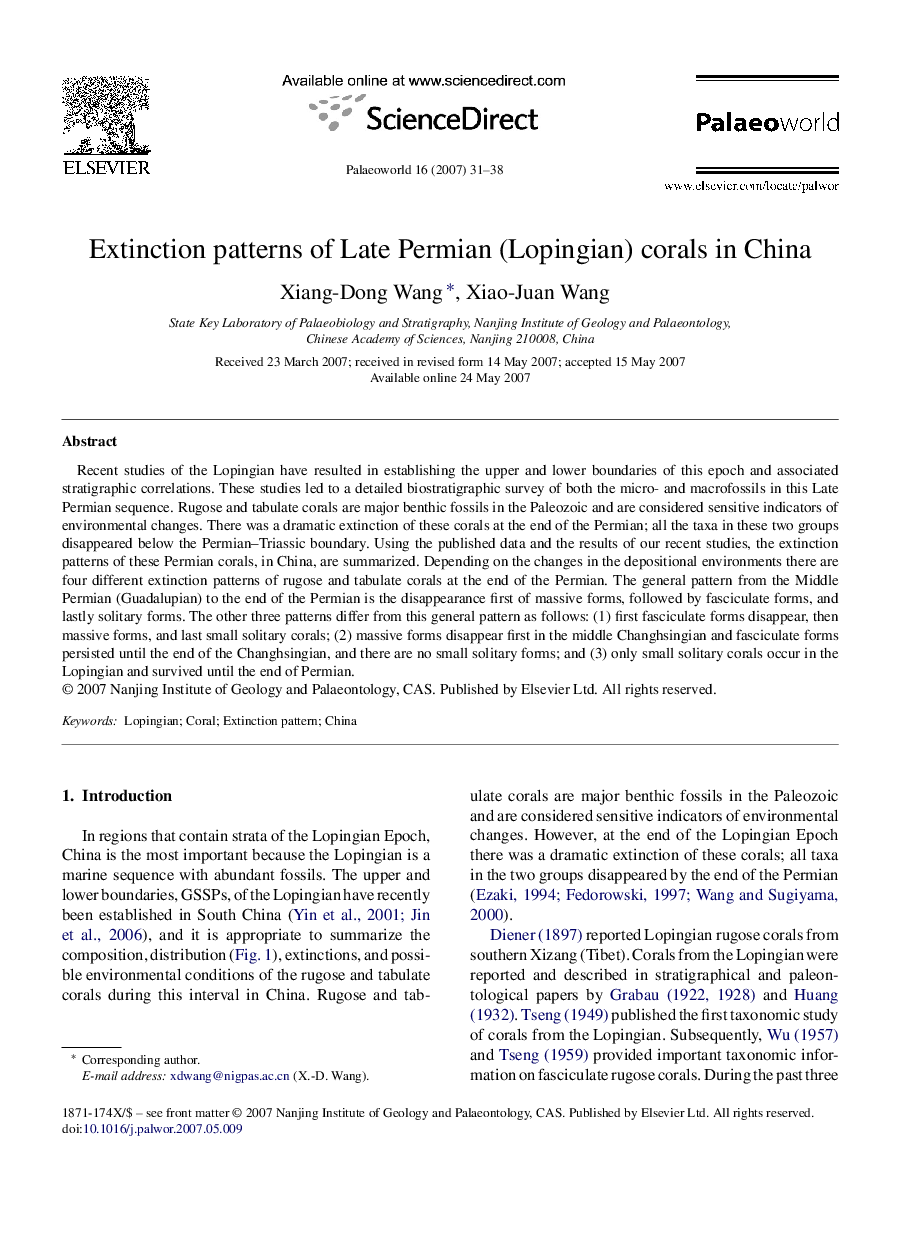| کد مقاله | کد نشریه | سال انتشار | مقاله انگلیسی | نسخه تمام متن |
|---|---|---|---|---|
| 4749966 | 1642286 | 2007 | 8 صفحه PDF | دانلود رایگان |
عنوان انگلیسی مقاله ISI
Extinction patterns of Late Permian (Lopingian) corals in China
دانلود مقاله + سفارش ترجمه
دانلود مقاله ISI انگلیسی
رایگان برای ایرانیان
کلمات کلیدی
موضوعات مرتبط
مهندسی و علوم پایه
علوم زمین و سیارات
فسیل شناسی
پیش نمایش صفحه اول مقاله

چکیده انگلیسی
Recent studies of the Lopingian have resulted in establishing the upper and lower boundaries of this epoch and associated stratigraphic correlations. These studies led to a detailed biostratigraphic survey of both the micro- and macrofossils in this Late Permian sequence. Rugose and tabulate corals are major benthic fossils in the Paleozoic and are considered sensitive indicators of environmental changes. There was a dramatic extinction of these corals at the end of the Permian; all the taxa in these two groups disappeared below the Permian-Triassic boundary. Using the published data and the results of our recent studies, the extinction patterns of these Permian corals, in China, are summarized. Depending on the changes in the depositional environments there are four different extinction patterns of rugose and tabulate corals at the end of the Permian. The general pattern from the Middle Permian (Guadalupian) to the end of the Permian is the disappearance first of massive forms, followed by fasciculate forms, and lastly solitary forms. The other three patterns differ from this general pattern as follows: (1) first fasciculate forms disappear, then massive forms, and last small solitary corals; (2) massive forms disappear first in the middle Changhsingian and fasciculate forms persisted until the end of the Changhsingian, and there are no small solitary forms; and (3) only small solitary corals occur in the Lopingian and survived until the end of Permian.
ناشر
Database: Elsevier - ScienceDirect (ساینس دایرکت)
Journal: Palaeoworld - Volume 16, Issues 1â3, JanuaryâSeptember 2007, Pages 31-38
Journal: Palaeoworld - Volume 16, Issues 1â3, JanuaryâSeptember 2007, Pages 31-38
نویسندگان
Xiang-Dong Wang, Xiao-Juan Wang,